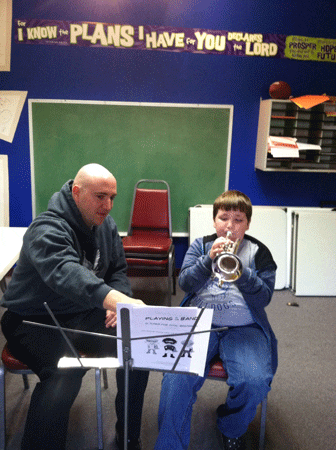Building big bridges
By Robert Docter –
So you call yourselves “Bridge-builders.” Great metaphor!
I like that, but I wonder how much you know about building bridges. Not much, I suspect. You probably don’t know the difference between a “beam” bridge and a “suspension” bridge—or how these compare with an “arch” bridge. Have you got any idea about tension in bridge building—or force? What’s the difference between an abutment and a pier or between a buttress and a brace?
Did they teach you any of this at Crestmont?
What?
They didn’t? Well, how do they expect you to be a builder of BIG bridges when you haven’t even got the terminology down.
You are now reminding me that this wasn’t a program in structural engineering but a curriculum in Salvation Army officership—I think they call it “making blood and fire Salvation Army officers.” By the way—do you know what that means?
It’s got a lot to do with building BIG bridges.
Bridges, you see, span something—usually something difficult that, for one reason or another, inhibits progress—slows things down—makes you go around an impediment—take the ferry or ford the stream.
Bridges connect separated people. They bring cultures together. They provide multi-cultural experience for people who have been separated from one another. They eliminate economic isolation. They bring families together. Bridges erase division and divisiveness.
Bridges are hard to build. Even figuring out what kind of a bridge one should build in a particular location to deal with a particular problem of connection is not easy. Figuring out the forces that are essential is critical. Forces are “any action that tends to maintain or alter the position of structure.” You can’t avoid dealing with forces when you build a bridge. What is important is that you make the force that is there work to help you rather than tear the structure apart in the middle of some storm. There’s also tension in building bridges. It, too, can hurt or help. The challenge is to find just the right amount. Tension is a “stretching force that pulls on a material.” A lot of the time, you will be the material. I hope you’re prepared to stretch and to stretch those with whom you work. If not, you’re going to get pretty tired in going the long way around something. If you have a single anchor in a solid foundation along with just the right amount of tension you can cantilever out to expand the dimensions of that stretch—so much so that people will perceive you as having your arms around the entire community– around the world.
Bridges change things. Coronado Island really isn’t an island at all. When I was growing up, you either took the ferry from San Diego to Coronado or drove many miles to the point where that little arm of land was connected to the mainland. Then, they built the Coronado Bridge. Talk about change—a sleepy little town with one great hotel and a Navy airfield suddenly became an economic powerhouse. Some of the original residents didn’t like this at all. These are the ones that didn’t like a lot of people around and preferred being sleepy. There is a natural inclination within the human condition to resist change.
In my judgment, too many officers and too many corps seem to prefer being sleepy. Nobody who wants to make connections can avoid the force of change or ignore the tensions that occur in the face of that change. The status quo can be our enemy unless we confront change. If the corps always stays the same, change something—anything—and then be prepared to evaluate that change. Don’t give up too soon.
Building BIG bridges is not a solo job. If you’re going to build an “arch” bridge, you need to remember the importance of the keystone—the point at which two separate arches are joined. It redistributes the forces in the arch and holds the entire thing together. I hope you know who your keystone is—and it’s not your D.C. If you’re going to build a “beam” bridge—recognize you probably can only span about 250 feet—unless you build more piers and then, you can build the longest bridge in the territory. Those piers are the key workers of your corps. If you are intrigued with the beauty and majesty of a “suspension” bridge—remember you must have strong anchors to hold the cables to the land. Drape the cable over towers firmly planted in bedrock—and this can end up being a BIG bridge.
Start small, gain skill, stay humble, think big, feel deep.
God bless.












